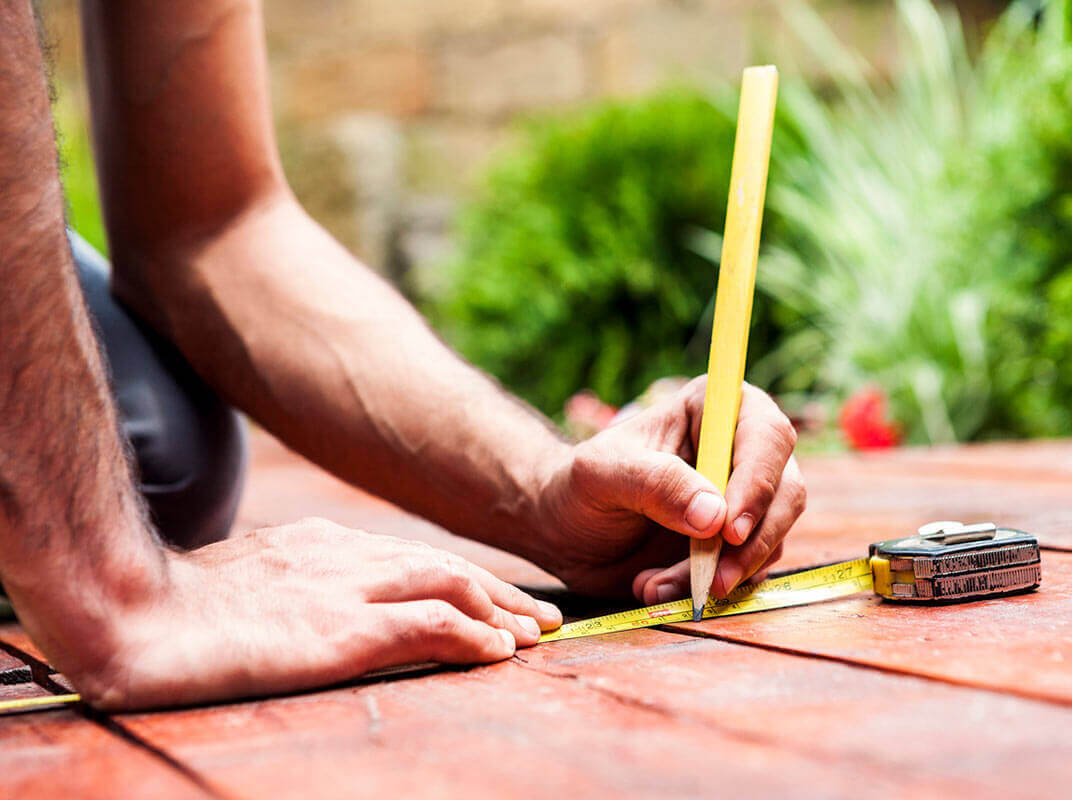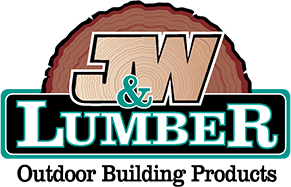
Whether you’re using classic redwood decking or versatile new composite materials, universal principles of deck installation and upgrades are the same as they have been for centuries. However, the standards and codes that are required for a safe, stable deck that can stand up to today’s inspection are always evolving. Though a basic deck update might seem simple at first glance, when things go wrong, problems escalate quickly.
Here are some of the most common decking mistakes we see homeowners make. Read on and avoid these hazards.
Mistake #1: Ignoring the understructure
There are a lot of moving pieces to consider when building a deck. It can be all too easy to take one look at an aging backyard deck and think, “Oh, it looks like it’s just a matter of replacing a couple of boards.” The natural reaction is to focus on the superficial planking (because that’s what’s easy to see), without paying enough attention to the health of the deck structure itself. Unless your deck was installed within the last five years, it’s smart to check out what’s happening “below deck”. That means physically getting under the deck to visually inspect support beams for rot and looking for red rust residue or other telltale signs of corrosion around connectors and deck fasteners.
Here’s a great video from Simpson Strong-Tie that shows you the five warning signs of an unsafe deck.
Mistake #2: Not staying up to code
Both building codes and safety codes associated with decking are updated with some frequency, so decks that were installed 20+ years ago might not be up to code. For example, today’s residential building code states that supports must be spaced 16 on center. Decks installed before this standard were built on supports spaced 24 inches apart (which is responsible for that “floaty” or bouncy feeling). If your supports are spaced too far apart or your surface boards are installed on a diagonal, be careful not to over span your material during updates.
Do I need a permit to build my deck?
Mistake #3: Underestimating the length of time required
Repairing or updating your deck should never be a rush job. Bringing an old deck up to snuff the right way takes time. You’ll need to thoroughly inspect the deck, identify the problems, obtain all your materials and perform repairs. Give yourself a schedule with plenty of time to do the job right and correct mistakes or unforeseen situations.
Mistake #4: Improperly attaching the ledger board
The ledger is the critical component that connects non-freestanding decks to a structure. Usually made of pressure treated lumber, the ledger provides much of the deck’s strength by creating the frame’s stiffness and supporting the joists. Proper deck installation requires attaching the ledger to the studs of the main structure, not attaching it to superficial materials like brick or stucco. Correct installation of the ledger is the trickiest part of building a deck. Special hardware is required since this area is prone to moisture collection that can cause rot and undermine the integrity of the deck.
Top 5 myths about composite decking.
Building codes have specific rules about how to install the ledger. Read requirements closely before getting to work. Improper installation could lead to serious problems such as the deck detaching itself from the structure or collapsing.
Mistake #5: Using the wrong hardware
Not all hardware is created equal. Make sure that your deck fasteners are specifically designed for outdoor use. Indoor hardware for homes—the stuff you typically find at big-box hardware stores—is not designed to stand up to the elements the way outdoor-specific hardware is. Look for steel hardware designed for use with pressure-treated lumber.
Deck lighting: plug and play options.
Mistake #6: Not getting to know your wood
Certain woods perform better and last longer under the heat, cold and moisture demands of the outdoors. Cedar or redwood decking materials perform well outside and do not require treatment. Douglas fir, on the other hand, is not ideal for outdoor use, so it should be stained or sealed for protection. Staining does help redwood and cedar, but it’s not totally necessary.
Mistake #7: Not seeking professional guidance
Unless you have extensive experience in designing and constructing decks, you might not be aware of all the technical challenges you’ll face when installing or upgrading your deck. Consult with a professional decking contractor about ground grading and engineering problems, especially when it comes to complicated issues like cantilever designs. Designing and building a deck is about more than a functional understructure and a few top boards. You must be comfortable handling math and engineering challenges that can get complicated quickly.
When hiring a decking contractor is your best bet.
You can find lots of deck inspiration and instruction videos online. However, there are specific issues that, if done incorrectly, can have catastrophic consequences. Avoid the mistakes above by doing careful research and speaking with decking professionals before you fire up that saw.
7 things you need to know before building a deck.

This is very informative blog, I had done one of the mistake listed above that I regret after because I am not sure with my budget I did it myself without knowing that it will cause double with all the mistakes I did. That is why when times like this I ask a professional craftsman for outside deck projects.
Thank you so much Landon! We agree! Many times the best option is to consult a pro in your area 🙂
Happy Building!
Michelle
Thanks for reading Landon! We agree many times the best option is to consult a professional.
Happy Building!